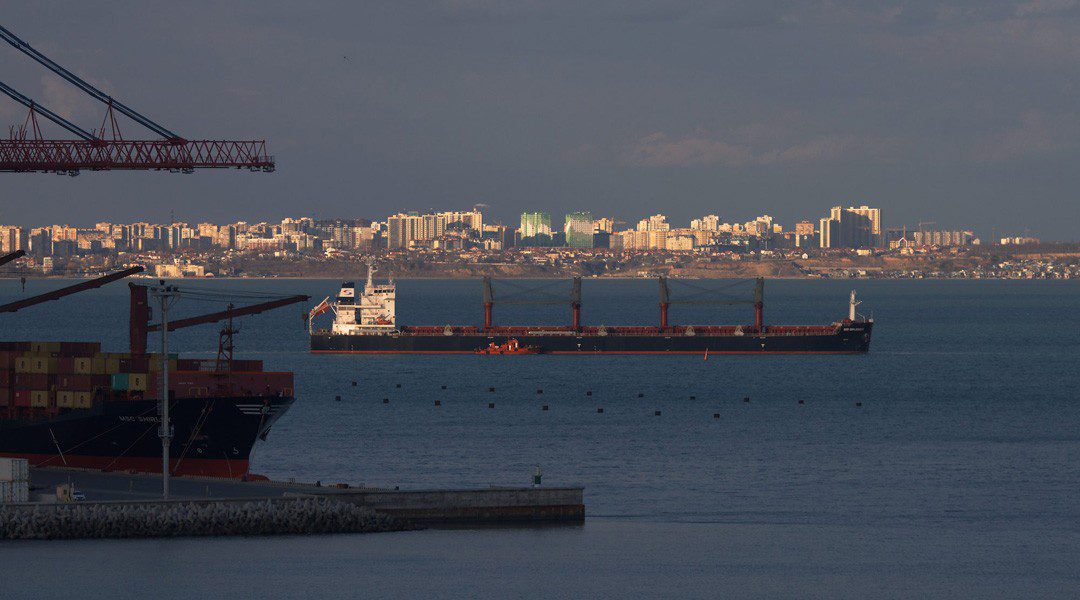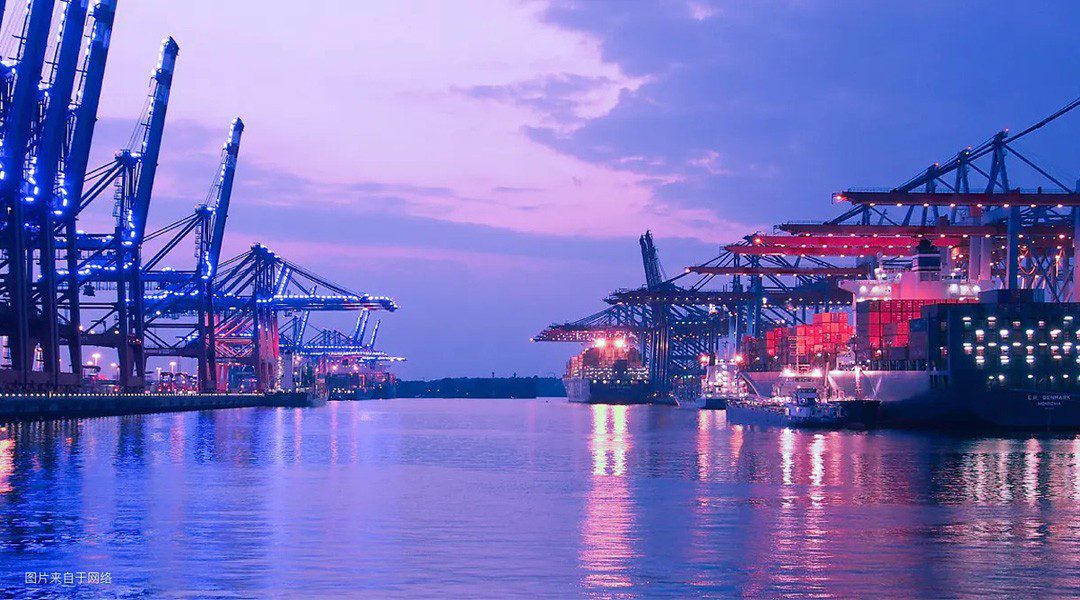
Executive Insights is a series by Shipping and Freight Resource that provides useful insights and thoughtful analysis enriching the knowledge of the readers with what is happening in the maritime, shipping, freight, logistics, supply chain and trade..
Executive Insights is your chance to pick the brains of industry veterans, leaders, and enablers..
As per current industry statistics, global parcel volume has risen around 27% year on year from 2020 and is estimated to reach more than 131 billion parcels, which is in excess of about 500 billion US dollars in value..
This equates to a staggering 4000 parcels per second, crisscrossing the planet at any given time. And this demand, of course, is driven by the rapid growth of eCommerce, which has not only become a staple of modern living but is also continually pushing the limits and boundaries of the global supply chain..
Such a high volume of shipments naturally means there is an equally large investment in trucks, truck drivers, planning, yard space, yard management and more. In order to function efficiently, there needs to be an IT system capable of handling the high levels of demand..
Even with these systems in place, there is still a considerable amount of strain on the global supply chain and transportation in general..
In this edition of Executive Insights, we caught up with Neil McEvoy (NM), VP of Business Development and Customer Experience at C3 Solutions, and Justin Pegg (JP), Chief Operating Officer of DPD, UK to discuss some of these trends, challenges, and solutions in the parcel delivery business..
SFR : Thank you for joining us today /Justin.. Let me start with you Neil.. Can you give a brief about C3 Solutions, its genesis and the /business that you are in..
NM : C3 is a software company based in Montreal, CA that operates as a software as a service company since in 2000. C3 has two main software offerings; one is a dock scheduling system, C3 Reservations, that predominantly serves the warehousing and grocery industry, which is a capacity management and dock scheduling tool.
The other area C3 Yard, is a yard management system that serves similar areas in logistics, parcel post, and grocery manufacturing. More of an execution-based software, it manages all the inbound, outbound, and on-site activity of a large-scale logistics operation.
SFR : What are some of the modern challenges facing supply chains in your view and within your operations..??
NM : Like most businesses, COVID has created an overall sense of uncertainty. Many businesses were unsure of their operating parameters when the pandemic first began. It wasn’t until they understood where and how they could operate, the laws and regulations governing operations, and how important logistics and transportation was going to be going forward that they could truly engage and respond.
Once that was understood C3, in particular, became very busy, as many companies began looking to leverage technology as a means of taking better control over their supply chain.
COVID also put a lot of pressure and extra volume on the industry as a whole. There were a lot of new requirements in terms of sanitation, extra checks at the borders, and other requirements; all of which were compounded by the lack of labor due to people self-isolating, being ill, or changing to a different industry altogether. In the end, COVID really changed the landscape of the industry.
During the beginning of the pandemic, Europe and the UK were also dealing with Brexit, which caused a number of changes with regards to administration, delays, customs, and other variables. To compound it further, both Europe and the UK are also facing a shortage of truck drivers. A surge in demand has led to an increase in driver’s wages.
SFR : Good to have you on this Executive Insights today Justin. How different is the parcel delivery landscape currently compared to pre-pandemic times and what has been the major change for the industry and for DPD..??
JP : DPD is the largest parcel carrier service in the UK and leads the premium sector for parcel deliveries employing approximately 22.000 people in the UK and specializing in next day delivery, with the premium service delivering packages to their final destination before 10 a.m.
DPD’s strategy has also been heavy on infrastructure investments, in both buildings as well as vehicles. When COVID first broke out in the UK, DPD was in a prime position to accelerate their growth, which they did by an astounding 50 percent.
We’re always very mindful that we’re one of the winners from COVID. But there has been unfortunately a number of people who haven’t been winners, which obviously we don’t want to gloat on that because that’s not the right way to do things.
Operationally speaking, DPD was very fortunate in that they haven’t had any significant issues. Instead, during the pandemic they continued to invest heavily in their infrastructure by buying up every available vehicle including green vehicles as DPD is the market leader in the UK in terms of electric and alternative fuel vehicles.

SFR : What does DPD and C3 feel about the Effect of Global Supply Chain Disruptions on the Industry..??
JP : Supply chain disruptions are being felt around the world, as every industry from grocery stores to automotive manufactures are dealing with shortages and outages of various products. Again, DPD was among the fortunate few as their investments and overall organizational unity has helped them to prosper during the pandemic where so many others have failed. But even for all their success, they’re still feeling the pain of the current supply chain disruptions.
We’ve had no delays personally, but we’ve had delays on vehicles. So rather than parcels getting to our customers, it’s more about vehicles coming from around the world, and their production line. So we have had some difficulties with getting vehicles on time. But that has not affected our service, and not affected our supply chain at all. Again, we’ve been very fortunate with the relationships and the people that we work with, we just seem to have managed it very, very well.
NM : From the C3 perspective, many organizations were looking for a means to take as much control over their supply chain as possible. Not only increasing visibility but overall access to data and a means to use it. Not only the pandemic, but other supply chain disruptions such has the Evergreen getting stuck, have underlined the need for companies to take better control over their supply chain.
We saw a lot of extra activity from our customers, they were using the system more, they were relying on it more, but also there was a lot of information from them coming back to us in feedback. Could the system help in other ways? So a lot of our customers who had, let’s say, the bookings product, all of a sudden needed yard management and a lot of yard management customers wanted a booking and slot management product.
SFR : DPD is known for its sustainability initiatives, and you focus a lot on reducing carbon footprint in your operations. What are some of the methods and processes you follow in achieving this and how does a digital solution help you in managing your requirements..??
JP : Climate control and reducing emissions has become an even more prevalent topic for both transportation and logistics industries. November 12th saw the conclusion of COP26, a worldwide summit to discuss, as well as plan, the steps necessary to reduce carbon emissions. The way in which companies respond to these new regulations is growing more important than ever.
As the largest parcel carrier in the UK, DPD has to take extra measures in order to reduce their overall impact on the environment. Part of this is done by purchasing alternative fuel vehicles for their fleet, including electric and biomethane, as well as hydrogen cell vehicles that will be available in the coming future.
However, another one of the big steps DPD has taken to reduce their carbon emissions is their partnership with C3 solutions. By optimizing their supply chain and their capacity management, DPD can reduce the overall mileage, fuel consumption, co2 emissions, and save on everyday wear items such as tires, something most wouldn’t even consider.
Ultimately, the goal is to not only reduce the overall amount of moves a vehicle needs to take, but to make sure that when the vehicle does move, it’s a smart move.
We will have in excess of 2000 HGV vehicles arrive at our hubs and then go to our depots every single day. And optimizing that fleet on your sites is absolutely paramount from not only a productivity standpoint, but also from a carbon footprint. The quicker you can visually see that vehicle and allocate it to a door, the time saved is incredible, which makes you as a business more productive.
SFR : In your view, how important is digitalisation in the industry and how do you foresee the future of transportation..??
JP : The driver shortage is a pain point for the transportation industry that’s being felt around the world. With fewer fresh drivers entering the field to replace the ones on the verge of retirement, the pool of available drivers gets a little shallower every day. Because of the high demand for drivers, their wages are coming at a premium, which can create other issues for smaller companies.
For DPD, it isn’t a matter of automation, but making sure that they create a good environment for their employees.
I think the first thing you’ve got to do is pay your people correctly. But also, on the back of that, it’s about looking after your people and adding value as a business to their lives. It’s about making sure you keep your attrition rates down, and you’re doing as much as you possibly can to keep the people you’ve already invested in.
Digitalisation and operational optimization are also incredibly important because without it, you end up using more drivers than absolutely necessary. I believe that the lack of digitalization in the industry is one of the issues contributing to the driver shortage problem.
In terms of automated vehicles and deliveries, however, DPD isn’t as enthralled by the idea as other companies may be.
Even if you had a driverless vehicle, you would still need somebody to pick up the package and give that personal handover unless you look at all the innovative solutions, like locker boxes. But then you still need somebody to put it in a locker box. So driverless vehicles would be good from a legislation point of view, in the sense that you’ve got more driver hours. But in reality, as human beings, we always need that personal touch also. And there’s nothing better than when you get a driver delivered to you with a smile, handing your long awaited package over to you.
NM : C3 Solutions is prepared for whatever the future may hold.I think one huge part of our product’s strength and the way it’s excelled over the years is our ability to integrate with other systems. So again, we have quite a distinct and unique area, you know, very much focused on logistics. We’re not a huge broad general company with hundreds of software offers. So the building blocks, the possibilities are certainly there. And I think that that’s one thing we’re super interested in, in the future, is how else could we integrate with other important systems, whether they be hardware, software, AI, you know, anything of that nature. So, yeah, it’s exciting to see what would be on the horizon in terms of robotics and driverless vehicles for us.
Have a question for Neil or Justin, feel free to drop us a line and we will get your queries answered..



